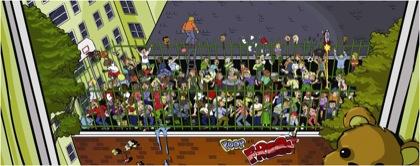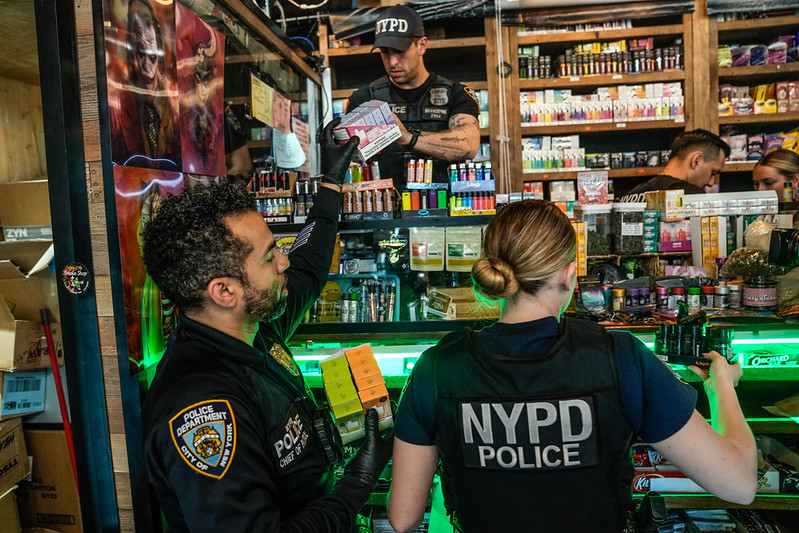Opponents of the expansion of a Park Slope private school vowed this week to press on with their cause, which they say has been tainted by a cozy relationship between the school and civic groups expected to weigh the matter with impartiality.
For the St. John’s Place Block Association, a particularly galling aspect of the Berkeley Carroll School’s desire to reconstruct a one-story annex at 181 Lincoln Place is the inclusion of a rooftop playground it fears will bring an unprecedented din to the area.They’ve even commissioned Carroll Gardens artist Brendan Tobin to provide a view of what it might look like, and the illustration, pictured here, evokes the adolescent mayhem that some fear most, from graffiti to trash.
“It was a fun piece to work on,” Tobin said, noting that his first submission was even more raucous.
Another concern of the association’s is that the project would represent the school’s continued push to deteriorate the Park Slope historic district, disrupting the quality of life in this well-heeled section of the borough.
The Landmarks/Land Use Committee of Community Board 6 recently approved the plan 11-4, and its full board is expected to weigh the matter Jan. 13, as this paper goes to press. The Park Slope Civic Council last week heard presentations from both sides regarding the plan, but decided it would need more time to offer an opinion.
Richard Bashner, the chair of Board 6, and Ken Freeman, president of the civic council, are both parents of children that attend Berkeley Carroll. And making the presentation to the civic council was Lydia Denworth, former president of the civic council and now executive vice president of the school’s board of trustees.
“It’s incestuous,” charged Arnie Rosenshein, who owns apartments at 209 Lincoln Place, which stands adjacent to the school. “I think the deck is stacked there.”
Still, Rosenshein and other opponents were given an extended period of time to make their case at the council’s Jan. 7 meeting. But Dan Enriquez, a member of the St. John’s Place Block Association, said the civic’s airing of the project only after the committee voted was unusual, and didn’t give the council a chance to lend its voice to the committee’s decision, which was typically the protocol. The school said the holiday season prompted the rescheduling.
“As the civic council’s ex-president [Denworth] was well aware of the process and she could have postponed filing with the [city] to allow for the correct process.Even if there was not an intentional effort to circumvent the civic council’s involvement, there is definitely the appearance of an inappropriate effort to do so,” Enriquez said in an e-mail.
Freeman said the fact that Denworth at one time headed the civic is a “fully disclosed point,” and said he will recuse himself from any vote his group takes. Bashner said he would not preside over the matter. “I always have passed the gavel when I have a conflict regarding a pending matter,” he said, adding that he expects the board to consider the matter fairly. “I try to approach my work on the board with the highest ethical standards,” he added.
Denworth told the civic council that the school feels very much a part of the community and has worked with neighbors willing to work with it. The school has agreed to remove air conditioning equipment from the rooftop, set back the playground 15 feet from the building’s edge, and spare the removal of any trees during the project.
Since the site sits in a historic district, the school must receive the approval of the Landmarks Preservation Commission, which will hold a hearing on the matter on Feb. 2. Votes taken by the community board and the civic group are simply advisory in nature.






















